Water, water, everywhere…
Camping in the backwoods or traveling through Mexico means you’ll need clean drinking water all day, every day. Even if you’re surrounded by enough civilization that bottled water is readily and cheaply available, it doesn’t hurt to have a portable water filter or purifier for those days when all the stores are closed, or you’re too lazy to go outside, or you see someone filling up empty water bottles from the tap to be resold in stores again. Ew.
Luckily for all of us, portable water filters have actually gotten pretty great recently. And no, I’m not talking about the well-known options that have great marketing and cost hundreds of dollars and don’t filter out viruses dammit. Why do they cost so much if they still let bugs through that’ll kill me!? Argh!
The options I’m talking about are comprehensive filtration devices, with technology so good that they’ll handle even the tiniest of microscopic organisms, which most traditional backpacking filters can’t handle. You can fill up from a stagnant pond in sub-Saharan Africa and you’ll be just fine. And isn’t that lovely?
What kind of water filter or purifier do I need?

This is where it starts getting technical, but the way I look at it, there are three major categories of contaminants worth discussing:
- Chemical: Lead, arsenic, chlorine, and iodine come to mind. These are more often found in tap water than river water, so if you’re traveling abroad (or filtering at home), you’d want something that can help with these. Dirt and dust are important to remove as well, but pretty much every filter on the market will do that. I’m not aware of anything that’ll filter out all chemicals, but carbon filtration is the most common method for handling these, and is quite helpful.
- Bacterial (and bacterially-sized things): These are the most common biological contaminants, and the most important things to filter, whether you’re traveling to another country, or hiking in your own. There are other microorganisms out there that can cause illnesses (such as protozoan cysts, like giardia and cryptosporidium), but they’re similarly sized, so if a filter can handle bacteria, they can handle the other ones too.
- Viral: Viruses, the smallest organisms on earth, bypass most filters. Viruses are pretty rare, and generally only found in rural environments in developing countries. You probably don’t need viral filtration if you’re hiking through North America or Western Europe (which is part of the reason why filters that remove viruses are so rare), but…well, if it can do it, great.
Ideally, you’d want something that can handle all three, and that’s what this list is about. To the best of my knowledge, these are the best portable water purifiers on the market today. Significantly cheaper options exist, they won’t work nearly as well as these.
This list is split into two parts, starting with…
Part 1: If you need total filtration (including viruses)
The following devices offer all-in-one filtration, including large dirt particles, harmful chemicals, bacteria and bacterially-sized microorganisms (like cysts and giardia), and viruses. If you’re going to remote areas in developing countries, viral filtration is important; if you’re hiking around North America or filtering tap water in Western Europe, you probably don’t.
There are certain things they won’t remove (salt, for example), but the options listed here offer the most comprehensive filtration on the market, and you probably won’t find something that does. These will remove all harmful biological contaminants, and certain chemicals, making tap water or river water taste great, and safe to drink.
1) Lifesaver Bottle: $150
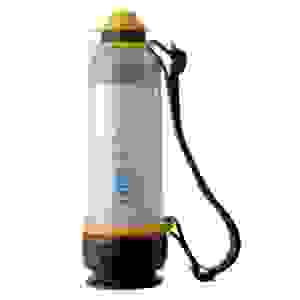
Update: It looks like the Lifesaver will be discontinued. I’m not entirely sure if this is temporary, but I’ll keep this updated if things change.
The Lifesaver Bottle was designed for the developing world, featuring an all-in-one portable water purifier that could provide clean drinking water for the 3 billion people that need it at a total investment of $20 billion. Makes you want to donate, doesn’t it?
As its design goals were simplicity and cost-effectiveness, it happens to suit the needs of backpackers and hikers just as well, and is readily available for purchase by first-world consumers, who are encouraged to participate in a buy-one, donate-one program.
The bottle has a filtration and pump system housed entirely within the bottle, so you pump a few times to press the water through the super-fine filter, and then you can drink. The bottle has a watertight cap, a carrying strap, has completely replaceable parts, and can even handle viruses.
For a while the Lifesaver was far and away the most cost-effective option on the market, though a couple new options have emerged that are lighter, don’t require pumping, and don’t need to be submerged upside down in a river to fill it up, like the Lifesaver does; but it’s still quite good.
The following numbers are estimates for the $150 Lifesaver Bottle 4000, with a limit of 4000 liters, and assume high-frequency replacement of carbon filters, available in $30 packs of 4 which treat 250 liters each. The 6000 liter version and carbon filter value packs can reduce the long-term costs listed below by about half.
- Unit price: $150 (4000 liter version)
- Replacement parts: $100 per cartridge, $8 per carbon filter, $6 per pre-filter
- Lifespan: 4000 liters (carbon filters need more frequent replacement)
- Initial water treatment cost: $0.06 per liter
- Recurring water treatment cost (replacement cartridges + filters): $0.05 per liter
- Empty weight: 22 ounces (623 grams)
Buy it here.
2) The Grayl Ultralight: $60
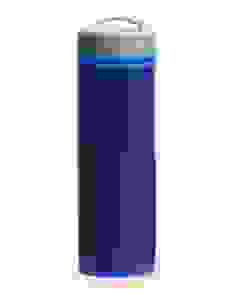
Frequently referred to as the Holy Grail of water purifiers (doesn’t everyone love puns?) the Grayl was designed by someone who got tired of drinking from sporty bottles with gigantic logos and flashy colors. This one offers the same great filtration performance as anything else you’ll find, but without the need for pumping, sucking, squeezing, or waiting.
The filter mechanism works like a French press; you fill up the lower chamber, and press the upper unit down into it. It takes about 15 seconds, after which you can drink just like you would from a regular bottle, without having to suck up the water through a straw. It also means you can pour out purified water into a cup for a friend, or fill up spare bottles for a long trip, and you’ll be hauling clean water around with you, instead of dirty water.
The Grayl has multiple filter unit options which can be swapped out according to your needs, including a low-cost tap water filter, or the top-of-the-line Purifier cartridge, which can handle viruses (removing 99.9999% of them), and 99.9999% of bacteria, along with other microorganisms and chemicals, with a 150 liter lifespan. From what I have seen, its filtration quality is the best of anything on this list.
The numbers below are for the Purifier cartridge, which is what you’d want for outdoor backpacking or international travel.
Full disclosure: They’ve provided me with some free test samples, and, years after the reviews, made me a revenue-sharing offer as well. But I like it a lot. Check out a very in-depth review here.
- Unit price: $60
- Replacement parts: $25 per cartridge (Purifier)
- Lifespan: 150 liters
- Initial water treatment cost: $0.40/liter
- Recurring water treatment cost (top-of-the-line Purifier unit): $0.16/liter
- Empty weight: 10.9 ounces (309 grams)
Buy it from TheGrayl.com.
3) Aquamira Frontier Bottle (Red Line): $50
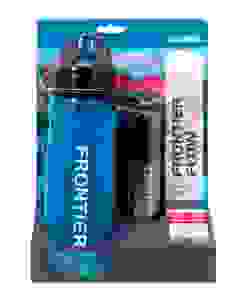
This is a recent upgrade to a previous Aquamira bottle; the new ones adds viral protection (in addition to chemical and bacterial and other microorganisms), making it seriously effective anywhere in the world.
Because it’s a recent modification to the Aquamira lineup, you’ll need to make sure it specifies viral protection (if that’s what you need, of course), and the replacement filters will be labelled Red Line. The bottle has other replacement filters, such as Green Line, but that’s for non-viral filtration (good for hiking in North America, and significantly cheaper, so it’s useful that you can swap them out as needed).
The numbers listed here are for the Red Line filter, to provide a direct cost comparison with the other top-of-the-line filters listed here, and the numbers are pretty great. It removes chemicals, 99.9999% of bacteria, and 99.999% of viruses and other microorganisms, with a 450 liter lifespan. The squishy straw is the type of thing that might need to be cleaned out every once in a while, but that’s true of most bottles anyway.
Full disclosure: The manufacturer has provided me with a few test products (though not this particular item), but all these numbers are accurate.
- Unit price: $50
- Replacement parts: $40 per cartridge (Red Line filter)
- Lifespan: 450 liters
- Initial water treatment cost: $0.11 per liter
- Recurring water treatment cost (cartridges): $0.08 per liter
- Empty weight: 5.6 ounces (158 grams)
Get it here.
They also make an in-line filter for attaching to a hydration bladder hose, which offers the same virus-removing performance, and is (at the moment) the only one I know of that does that.
4) Water to Go Bottle: $40 (approximately)
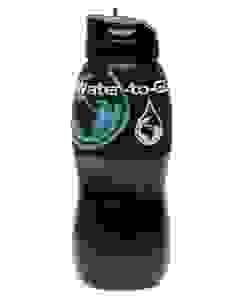
This is another one that might require overseas shipping, depending on where you live, but even with British pound conversion and international shipping costs, it’s still rather affordable.
The Water to Go Bottle removes 99.9% of biological contaminants (including viruses) and certain harmful chemicals, using a NASA-developed technology that removes particles from the water without using a “real” filter, but through a process called adsorption, though it also includes a carbon component for soaking up chemicals.
(The site claims it removes 99.9% of all microbiological contaminants, but elsewhere on the site they’ve listed the test results, which put both virus and bacterial removal at 99.9999%, and other types at 99.99%. I’m not sure what the 99.9% refers to.)
There’s a smaller bottle available as well, but the numbers here are for the one in the photo. Prices on their site are listed in British pounds, and the numbers here assume a conversion rate of 1 British pound equal to 1.5 American dollars, and don’t take into consideration the international shipping costs:
- Unit price: $37.50
- Replacement parts: $13.5 per cartridge
- Lifespan: 200 liters
- Initial water treatment cost: $0.18 per liter
- Recurring water treatment cost (cartridges): $0.067 per liter
- Empty weight: 4.8 ounces (138 grams)
Get it here.
5) Katadyn MyBottle: $60
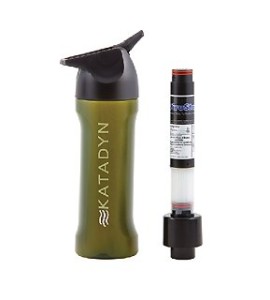
The Katadyn MyBottle uses a combination of filtration and iodine purification, to remove particles, and kill whatever microorganisms are inside. This is highly effective, but means the water will taste like iodine. This used to be the standard method for hikers everywhere, but some of the newer models, such as those listed above, manage the same level of safety without any added chemicals, which is likely to be a preferable solution for most people.
But it works, so I’m including it here, as it came in quite handy for me on trips through Eastern Europe and South America, and it’s quite simple. Besides, I don’t think it tasted so bad. I think it has been bested by some of the newer models out there, both in terms of non-iodine performance and cost-effectiveness, but it’s still quite functional, particularly if you use it only occasionally, in which case its moderately-cost-effective performance won’t add up too much.
- Unit price: $60
- Replacement parts: $35 per cartridge
- Lifespan: 150 liters
- Initial water treatment cost: $0.40 per liter
- Recurring water treatment cost (cartridges): $0.23 per liter
- Empty weight: 10 ounces (283 grams)
Buy it here.
If you DON’T need total purification
So this probably sounds horrifying, but there are a couple systems worth mentioning that only provide partial filtration, specifically focusing on removing biological contamination, which is the type of thing that works perfectly fine for hikers, but is not necessarily ideal for travelers, who will run into metallic tap water and maybe a virus or two. But if you’re hiking in North America, these might work for you:
7) SteriPEN Water Purifier systems: $100 (depending on the model)
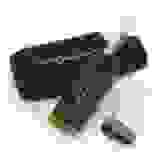
Although I much prefer all-in-one systems contained within the bottle, this is a popular device for backpackers all over the world, so I thought I’d discuss it here.
The important thing to remember is that the SteriPEN kills the microorganisms in the water with UV light, but does not actually remove them; it’ll be safe, but you’ll drink them right up. This also means it won’t remove chemicals, metals, particles, or anything else.
It’s possible to combine this with extremely cheap carbon filter bottles, which only remove large particles and certain chemicals, and thus combining them together would provide a more complete system. The Camelbak Groove and Brita water bottles come to mind.
You also need to use clear water, because the UV light will get blocked by sediment. You really don’t want to use this on muddy water, ever. You don’t want to use any filter with muddy water, but the other filters will actually clean it, which will damage the lifespan of the filter, but drinking muddy water with a SteriPEN might damage the lifespan of you.
The SteriPEN claims battery life long enough to clean 100 liters with 4 AA lithium batteries (about $2 each), which could be even cheaper with rechargeables (seriously, why does no one use rechargeable batteries?). The manufacturer will replace the bulb for $60, so the combined cost is still fairly cost-effective over long periods, but again, you’d need a separate filter if you wanted to remove metals, chemicals, and other stuff.
- Unit price: $100
- Replacement parts: $60 bulb, batteries of varying cost
- Lifespan: Approximately 8,000 liters (bulb lifespan)
- Initial water treatment cost (SteriPEN + 4 AA lithium batteries): $1.08 per liter
- Recurring water treatment cost (batteries + bulbs): $0.10 per liter
- Weight: 4 to 8 ounces with batteries, depending on the model (115 to 230 grams)
Buy it here.
8) The Sawyer Filter Bottle: $50
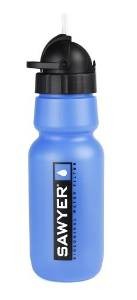
I have pointed out on many occasions that if you are only hiking in North America (and other places where viruses aren’t a problem), this is probably the best option out there.
The Sawyer bottle has a 0.1 micron filter size, which is good for everything biological except viruses, and it won’t handle chemicals, either, so it’s no good for low-quality tap water; but it’ll handle 99.99999% of bacteria, along with other bacterially-sized microorganisms (cysts, protozoa, etc), which works just fine for filling up from a river in the mountains, and is guaranteed to last for 3.7 million liters (minor note: these claims have been put to the test, and have been shown to come up short; it’s probably best to replace the filter long before the lifespan guarantee runs out).
There’s the arguable advantage of having something all-in-one, which can handle hiking and international travel and icky tap water, and some people might prefer that sort of minimalism; but if all you need is something for outdoorsy North American recreation, this is a good one.
- Unit price: $50 (though frequently found on sale)
- Replacement parts: None; buy the whole thing again
- Lifespan: 3.7 million liters (as mentioned, this claim is not sufficiently backed with evidence; it’s probably best to use it for a few months, just like the others)
- Initial water treatment cost: $0.000013/liter
- Recurring water treatment cost: $0.000013 per liter (as mentioned, it won’t last as long as they say, so this number should really be much higher)
- Weight: 5.5 ounces (155 grams)
Get it here.
There’s an in-line filter as well, for attaching to a hydration bladder, which offers the same performance.
Final thoughts
As you may have noticed, I’m a big fan of all-in-one designs. With the exception of specialized devices like the Sawyer Bottle and SteriPEN, all the options on this list can handle chemicals, bacteria and bacterially-sized things, and even those pesky little viruses (though with varying removal rates), though I would recommend using the ones with the highest removal rates if you’re going somewhere seriously questionable. Other pros and cons include some with great long-term cost-effectiveness, while others might offer swappable filters for low-grade filtration in less risky areas, and others might just fit better in your cup holder. A lot of this comes down to personal preference and ease of use, but performance is worth taking into consideration as well. But for reasons related to performance and ease of use, I’m sticking with the Grayl for now.

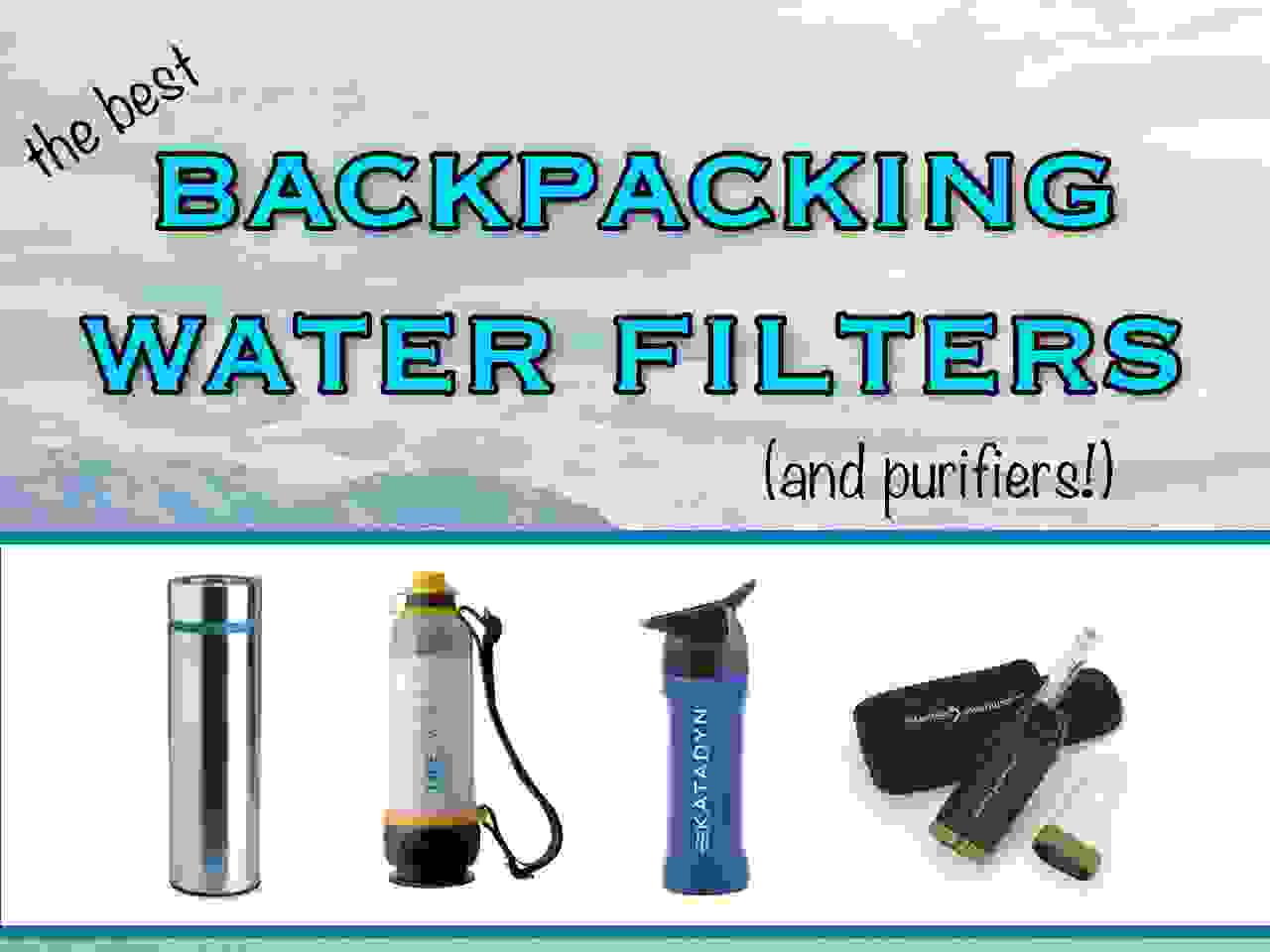



Great post! Been thinking of buying a water purifier, and was looking at the SteriPen. This saved me a lot of researching, thanks! :)
cheers,
Ni.
I really wish they sold the Lifesaver in camping stores, because it’s just objectively superior to anything they sell. The guy invented it for the third world, so I guess he just hasn’t been marketing to them, but he really should. And by the way, Camelbak now makes a water bottle that has basically has a Steripen inside it. If the Steripen is for you, just get the Camelbak instead. But I’d still get the Lifesaver if I were you, because most water that needs purification also needs filration. Anyway, glad to know my research has been useful!
It is hard to tell what the bottles are made from. I’m looking for a glass or stainless bottle with a filter.
I think the Grayl is the only option in that case. I think everything else is plastic of some sort. The Grayl has a single plastic component on the inside (the filter itself), but it’s BPA-free.
I’m back here, again reading into this. The time to get back into ‘normal’ society is drawing near, and I really do not want to use the bottled water they sell back in the city. I’m thinking about the Lifesaver :)
I think a Britta will do just fine for city life. They’re handy.
And then I take it to India in July!
Okay, good point. I’ve also recently discovered the Sawyer 3-way filter which attaches right into the hose of a hydration bladder, or can be used as a sink adapter. Worth a look. I was going to give it a more thorough review on here once I get more info.
I would not recommend the Sawyer brand filters. I have had a frustrating experience with those things being shipped with defects and they clog VERY easily. I was on a trip and used some pretty sketchy water and the thing clogged, rendering my bladder useless (I did the in-line). I’m lucky that I always pack a sealed 24 oz. bottle of water with me for just that reason (I’ll lug it around if it keeps me safe).
I just bought the GRAYL, which seems like a no brainer. All mechanical filtration and purification, low risk of cross-contamination AND just to top it off.. buoyancy powered, not gravity, so the sediment sits at the bottom. Even better, it’s not pressurized like the lifesaver, so it’s easy to pour for cooking on the trail or sharing. NO BRAINER! :)
By the way, thanks for this post. Made my decision so much easier.
Hmm…thanks for sharing your experiences with the Sawyer. After having used the Grayl for a while now (including a recent trip), I’m quite happy with it. Glad you are too.
I’ve made some bad experiences with a sawyer-filter, too. The sealing ring was quite loose, the thread (made of plastic) was not that close. Me and my friends got sick after filtering even quite clear water in Sweden. Probably cross contamination (read: our own fault). Although we were very careful with separating dirty water from clean water, i suspect the plastic thread of the filter letting some dirty water to the clean water.
This year i will try the Grayl. Seems a lot more reliable.
PS: Probably i screw up all those technical terms since English isn’t my first language… but i guess you’ll get the point ;-)
Don’t worry, I understood it. Cross-contamination is always a problem, but I think it’s a problem with everything. It’s good to clean things with a bit of alcohol once in a while, and be careful not to touch anything after you get your hands in the unclean water.
Word to the wise: Water To Go has a 500ml one now (two thirds the size of the one you showed), for 13 GBP (or $20 USD). Sweet price and easier to carry, perhaps. If hiking in the deep woods for a week at a time, I’d bring this one and then a larger Nalgene to store the filtered water….you could carry 1.5 liters this way. When backpacking in civilization? 50cl is probably enough at a time.
Hi everyone interested in water purifier standards
Water to Go does not pass the guidelines –
EPA Guide standard- The “Guide Standard and Protocol for Testing Microbiological
Water Purifiers” it is an internationally recognised standard- that all good manufacturers are aware of and work towards or exceed
99.9999%- bacteria
99.99% – Virus
99.9% – microorganism- it passes this but that is all
99.9% for all contaminants is not good enough- so say the techies who spend their whole life checking this stuff
the testing guidelines above are for use on unknown water quality
http://www.biovir.com/Images/pdf026.pdf
It may be of some interest to note: (at least these freedom & my guzzy are honest in their statement)
The patent holder has at least two distributors in the USA; FreedomFilter.net, myguzzy.com and Water to Go in the UK, at today’s date these 3 companies are using the same US Patent#7473362, International patent pending filter-
The patent number is published either on their websites, product packaging or on the filter itself
FreedomFilter.net – state quite clearly
‘’Note: Use only municipally treated or micro-biologically safe water’
myguzzy.com – state quite clearly
‘This product is for use with municipally treated water only’
As i mentioned in a previous post
Why not have a look at the Aqua Pure Traveller- have been making ‘their product that exceeds the Guide standard for the last 20 years- compared to other bottle type systems- much easier to squeeze- and meets meets a lot of the chemical reductions that people look for too- purehydratrion.com
Hope you find this information useful- it is the best guide you will find- certainly for what the guide standard considers to be safe for use on microbiological unknown water
regards
Jim
there is also the option of the lifestraw which filters up to 1000 liters, cost is about $20
I do like the Lifestraw, but it doesn’t filter viruses or minerals, and you have to bend down into a river to drink. You can’t fill up a bottle and go somewhere. It’s fine for certain things, but they could just put it inside a water bottle and it would work a lot better for most people.
Recently bought the lifesaver and I can tell you that’s it’s far superior than any other water purification/filtering system I have ever used. You can purchase them on-line in Canada very easily.
Well worth the investment!
It’s definitely quite an attractive piece of engineering. This is why it was such a hassle trying to find a backpack that had side pockets big enough to fit a water bottle. They’re a rare thing these days.
Thanks for this post. I’m getting into ultralight backpacking but I still think I’m going for the Lifesaver. Seems too good to pass up.
Yeah, it’s a good one if you can deal with the size and weight. Hard to find better long-term options.
I am a huge fan of the Sawyer PointOne Squeeze set. Very compact and lightweight, it has a million gallon use life, its easy to maintain, and it screws onto any standard water bottle. I have taken it traveling abroud and backpacking. It could be a good option for you. Not to mention it is WAY less expensive than most of the above, around $40.
It will not filter out viruses though (neither will most of the filters above) so take some purification tablets or a SterPen for post-Sawyer treatment if you feel the water may contain viruses (almost non-existant in the developed world but could be a problem in Africa or rural Asia).
Yeah, I was looking into their inline filter, which you just stick into the hose of a hydration bladder and never worry about it ever again. It’s the same sort of device as what you’re mentioning, but designed to hook into a hydration hose instead of a water bottle. Wish they’d make this inside a water bottle as well, though.
Actually, they do!
http://www.amazon.com/dp/B005SO8VAE/ref=wl_it_dp_o_pC_nS_ttl?_encoding=UTF8&colid=2ZTECPNUZYUMG&coliid=IU36UCAWHPK3Z
They are decently priced as well, with the same 1 million gallon warranty. I was thinking about picking one up for when I travel. Keep the squeeze for the camping trips.
Hey what is the very best to filter and purify water? Just the Lifesaver Bottle? My daughter is going to Bolivia for 18 months and we are wondering if anything else is needed like a UV stick? She will be out in the rural areas and we want to minimize the microbes and things like giardia. What would you suggest if you were sending your daughter!! And how many replacement filters would you send? Thanks any ideas would be helpful!!
The Lifesaver Bottle purifies everything completely, so there’s no need for a UV light. As for replacing the filters, this can get just a little tricky. There are actually three components that need replacing after a while, and their lifespan will depend on how dirty the water is that you’re trying to purify.
The components are: The filter cartridge (lasts for 4000 liters or 6000 liters, depending on which model you buy), the carbon filter (last for about 250 liters), and the pre-filter (which removes large particles like dirt or visible dust, though it’s washable like a sponge; if you fill from a sink I don’t think you need to worry too much about this stage).
So 18 months is about 550 days, and, depending on how much activity is on the agenda, you could easily go through a liter of water per day, or maybe two. This will depend on the climate and the altitude (you go through water faster at higher altitude, until you get used to it). But even so, if you’re planning on drinking 1000 liters over this period of time, which seems about right, then you would need 1 Lifesaver Bottle, and a few carbon filters, which come in packs of 4. Maybe an extra pre-filter, which comes in packs of 2.
Check out the technical details on the Lifesaver for extra info, but I think a single bottle plus a pack of each type of filter will take care of things.
Thanks a ton, that is great information!!!
You are a find!
Great to have all this info…although, it can be confusing. I am going to India for 2 weeks and I am having a hard time deciding what is the best product for me.
Also concerned about losing an expensive item and then what do you drink? Seems like I would need two, for just in case. Going on a tour therefore I need a convenient bottle. I seem to be going for The GRAYL although doesn’t look convenient for carrying. What do you suggest? Thanks very much.
For a 2 week trip I would definitely recommend bringing just a single thing. If you lose it halfway and have to buy bottled water for a week, that’ll be cheaper than buying multiple filters and having an unused spare when you get home.
For carrying the GRAYL you can just pick up something like this, if you’re not planning on carrying a backpack or small bag around during the day. It’s just a water bottle strap, so you can carry it easily, and I think that setup would work quite nicely.
Great post! I was thinking of giving the Steripen a go at some point, but it looks like there are some better options out there. Either way, I’d say portable purification systems are definitely the way forward :)
Yeah…it’s not like it’s bad, but it annoys me that it’s incomplete.
I read your product details and feel happy to know many new things. Recently i used a water filter but the filter didn’t work good but now i got some fantastic ideas from your article and going to buy new water filter. Thank you!!
Happy to help. A few of these are lesser-known, so I like sharing the info.